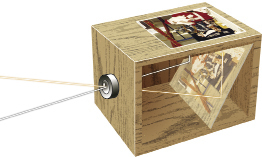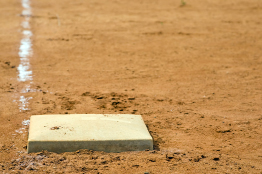Module 6
1. Module 6
1.10. Page 5
Module 6: Triangles and Other Polygons
Lesson Summary

The camera obscura was a forerunner to the photographic camera. This device consisted of a lens and mirror that projected an image onto a plate, which could then be used to sketch or paint a realistic picture. The proportions of the objects displayed on the screen are preserved. This is another example of similar figures—the focus of this lesson.
In this lesson you explored these questions:
-
How can you determine if two polygons are similar?
-
How are the relationships among the sides and angles of similar polygons used in problem situations?
Check your level of understanding of the materials covered in this lesson by completing “Lesson 2 Traffic Lights.” If you select an amber or red traffic light in the multimedia piece, you will receive information about additional work you can complete to improve your understanding of the topics. Complete the suggested work before you proceed to the Lesson 2 Assignment. If you experience difficulty, contact your teacher before starting the Lesson 2 Assignment.
To answer these questions, you applied the principles that, for similar polygons, corresponding angles are equal in measure and ratios of corresponding sides are equal. Equal ratios are proportions, and you used proportional reasoning to solve a variety of practical problem situations.
 Assignment
Assignment
Retrieve the Lesson 2 Assignment Booklet you saved in your course folder at the start of this lesson. Complete the Assignment. Resave your Assignment Booklet in your course folder and submit a copy to your teacher for assessment.
Unit 3 Project

© ASP Inc/14172617/Fotolia

© eboss6/2776142/Fotolia
In Lesson 1 you found similar polygons in your Unit 3 Project topic. Another example of similar polygons in games can be seen in baseball. The shape of first base is the same as the shape made by all four bases in the baseball diamond. How could you prove they are similar polygons?
Use what you have learned in this lesson to prove the similar polygons you identified for your topic are actually similar. Save a copy of all your work in your course folder to use in your project presentation. For more information about this step and later steps of the Unit 3 Project, refer to the Unit 3 Project.